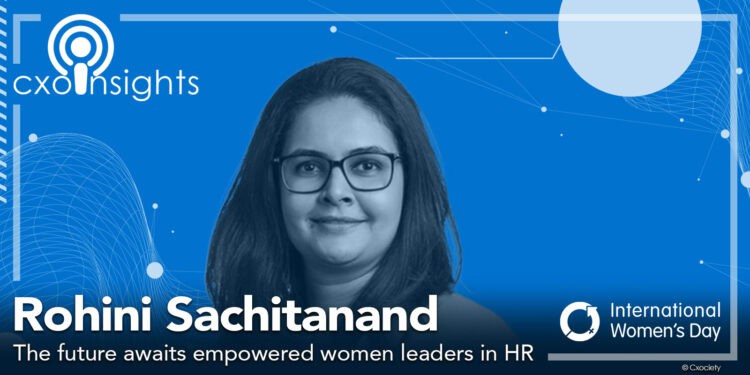Changes in American economic policies will arguably impact businesses outside the US, particularly in Asia, due to its backward and forward integration in global value chains. Nomura Research listed Vietnam, Thailand, Malaysia, and Singapore as most affected by potential US tariffs.
Businesses in Asia will likely tweak their strategies to accommodate the new uncertainties while navigating the known challenges ahead, including rising competition—both local and domestic—regulation and calls by CEOs and Boards to contain costs while driving growth through innovation.

The region, marked by rapid digitalisation and evolving workforce dynamics, presents unique opportunities and challenges for HR leaders, particularly women in leadership roles. As James McQuivey, VP and research director at Forrester, notes, "The fate of your organisation depends on how you handle the critical choices coming your way."
Evolving landscape of HR in Asia
The HR sector in Asia is increasingly influenced by technological advancements, changing societal norms, and an emphasis on diversity and inclusion. With the rise of artificial intelligence (AI) and data analytics, HR leaders are now equipped to make more informed decisions, streamline processes, and drive organisational efficiency.
According to Deloitte, "In the age of AI, machines and algorithms are putting steady pressure on HR leaders to keep pace. Artificial general intelligence (AGI)… has the potential to reinvent work—and to usher in a new ecosystem of human-machine interaction." This reflects a significant shift towards data-driven HR practices.
Moreover, digitalising HR processes enables organisations to enhance employee experiences through personalised engagement and tailored learning opportunities. With remote work a norm for many industries, HR leaders are adapting their strategies to foster a connected corporate culture, ensuring that employees remain engaged and motivated, regardless of their physical location.
Key issues and challenges
Despite these advancements, HR leaders face several pressing challenges. One of the most significant issues is overcoming traditional gender norms and unconscious biases that continue to permeate the workplace.
Although many organisations are implementing diversity initiatives, the underrepresentation of women in senior roles remains a critical barrier.
As Rohini Sachitanand, vice president of Human Resources at HPE, observes, while women's leadership in Asia has evolved, traditional attitudes and systemic barriers still pose significant challenges. She emphasises the need for mentorship and sponsorship to bridge the gaps in leadership opportunities for women.
Additionally, the challenge of demonstrating measurable business impact continues to affect HR's credibility within organisations. HR is often perceived merely as a support function rather than a strategic driver of business success.
Sachitanand points out that aligning talent strategies with organisational goals and showcasing the benefits of a diverse workforce is essential for gaining a seat at the leadership table. This shift requires HR leaders to articulate the value of HR initiatives in terms of measurable outcomes, such as employee retention rates, improved performance metrics, and enhanced organisational culture.
Another challenge lies in the rapid pace of change in workforce expectations. The pandemic has reshaped how employees view work-life balance, flexibility, and job satisfaction. HR leaders must navigate these shifting expectations while maintaining organisational productivity and morale.

"For women HR leaders, this dual challenge is particularly pronounced; they must advocate for policies that support work-life balance while also ensuring that their organisations remain competitive in a dynamic market." Rohini Sachitanand
Opportunities for women HR leaders
Despite these challenges, the evolving HR landscape offers numerous opportunities for women leaders. As organisations increasingly recognise the importance of diverse perspectives, there is a growing demand for women in leadership positions.
McKinsey's Women in the Workplace research reveals that companies with more executive roles tend to outperform those with fewer women in profitability and value creation. This underscores the critical role that female leaders play in driving organisational success.
"To sustain progress, fostering a mindset shift, stronger sponsorship programs, and systemic change will be crucial in ensuring more women reach and thrive in leadership positions across the region," opines Sachitanand.
She further posits that by advocating for systemic changes and stronger sponsorship programmes, women can pave the way for future generations of female leaders. The increasing focus on talent development and leadership pipelines presents a unique opportunity for women to assert their influence and demonstrate their capability in strategic roles.
She also notes that the shift towards flexible work arrangements allows women to balance personal commitments while advancing their careers. Many organisations recognise the need for adaptable work environments, which can benefit women juggling multiple responsibilities.
Sachitanand advises women to define what success looks like for them personally and professionally and to leverage mentorship and sponsorship to navigate their career paths.
"I also remind people that flexibility is your ally, so embrace work arrangements supporting career and personal goals. Most importantly, it releases the pressure to do everything perfectly. Leadership is about making an impact, inspiring others, and staying true to your values—trust yourself and move forward with purpose," she advises.
The role of mentorship and sponsorship
Mentorship and sponsorship are critical components in the career development of women leaders. Mentorship provides guidance, support, and encouragement, while sponsorship involves senior leaders advocating for emerging talent.
Sachitanand explains that mentorship allows HR leaders to share their unique experiences, shape future talent, foster leadership development, and reinforce the company's culture and values.
"Mentorship from functional leaders also strengthens cross-functional collaboration and encourages diverse perspectives, ultimately leading to a more inclusive and innovative workplace. It's not just about developing talent—creating a ripple effect that empowers the entire organisation to thrive." Rohini Sachitanand
She notes that while mentors share advice and experiences, sponsors actively open doors to high-visibility projects and executive networks. This dual approach is essential for bridging the gap between talent and opportunity, enabling women to overcome systemic barriers that may hinder their career progression.
According to Sachitanand, organisations implementing structured mentorship programmes can create a supportive environment fostering women's growth. Such initiatives benefit the individuals involved and contribute to a more inclusive corporate culture. Companies like HPE have recognised the importance of mentorship and sponsorship, integrating these practices into their leadership development strategies.
Gender equality and inclusivity best practices
To advocate for gender equality and inclusivity, HR leaders must implement best practices that promote an equitable work environment. Sachitanand stresses the importance of ensuring all HR processes are fair and unbiased, from recruitment to career development.
This includes actively seeking to eliminate bias in hiring practices, providing equal opportunities for advancement, and ensuring that training and development resources are accessible to all employees.
Offering flexible work arrangements and career development opportunities can help create an equitable environment where the workforce can thrive. Implementing mentorship programmes for underrepresented groups can foster leadership opportunities and drive cultural transformation.
"Regular training on diversity, equity, and inclusion is also crucial to foster an inclusive culture. The key is having leadership aligned and accountable to help drive sustained change toward building and maintaining an equitable and inclusive culture," she continues.
Technology in HR practices
Forrester's Predictions 2025: The Future of Work concludes that enterprises are waking up to massive skills gaps, exacerbated by the need for AI-based skills. Skills intelligence tools can help, boosting recruiting, upskilling and reskilling, and talent mobility use cases
Integrating technology into HR practices is another avenue for enhancing organisational efficiency and promoting inclusivity. She recommends adopting data-driven HR tools to enable better decision-making, which is particularly important in a rapidly changing business environment. For example, AI can streamline the hiring process and reduce bias, ensuring a more efficient and equitable approach.
Robotic Process Automation (RPA) can also help HR functions streamline repetitive tasks, allowing HR leaders to focus on strategic initiatives. By automating administrative processes, HR professionals can enhance employee satisfaction and engagement.
"Additionally, using technology for continuous learning, such as e-learning platforms or virtual mentoring, fosters talent development while supporting the organisation's growth objectives. This integration of technology creates a more agile, data-informed HR function that drives business success." Rohini Sachitanand
The future awaits
The road ahead may be fraught with challenges, but as Sachitanand articulates, the focus on leadership development, equal opportunities, and flexible work arrangements will be crucial in shaping a more equitable and inclusive future for women in HR across Asia.
By addressing the barriers that women face and fostering a culture of empowerment, organisations can unlock the full potential of their workforce, driving innovation and success in an increasingly competitive global market.
In this era of change, the commitment to gender equality and inclusivity will enhance organisational culture and contribute to the broader societal shifts needed to create a more equitable world. As we move forward, women's voices and leadership in HR will be instrumental in shaping the future of work in Asia.



